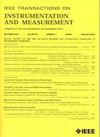等效比率测量模型的因子筛选:一种结合随机森林算法和支持向量回归的混合方法
IF 5.6
2区 工程技术
Q1 ENGINEERING, ELECTRICAL & ELECTRONIC
IEEE Transactions on Instrumentation and Measurement
Pub Date : 2025-04-04
DOI:10.1109/TIM.2025.3553950
引用次数: 0
摘要
利用火焰光谱数据测量等效比是燃烧诊断技术中的一个关键问题。传统的方法依赖于具有不同光谱特征的化学发光波段,可能无法充分利用高光谱数据的丰富性。在本文中,我们提出了一种使用随机森林(RF)算法从光谱数据中筛选强相关光谱特征用于等效比测量建模的方法。RF通过计算每个特征波长的均方误差(mse)来评估每个波长对等效比回归模型的影响并进行排序。选取得分较高的波长作为模型因子,利用支持向量回归(SVR)构建特定的等效比测量模型。所构建的等效比率测量模型的mse为0.0019,决定系数($R^{2}$)为0.96,表明模型具有较强的预测能力和泛化能力。本文章由计算机程序翻译,如有差异,请以英文原文为准。
Factor Screening for Equivalence Ratio Measurement Modeling: A Hybrid Approach Integrating Random Forest Algorithm and Support Vector Regression
Measuring the equivalence ratio using flame spectral data is a key focus in combustion diagnostic techniques. Traditional methods rely on chemiluminescent bands with distinct spectral features, which may not fully leverage the richness of hyperspectral data. In this article, we propose a method for screening strongly correlated spectral features for equivalence ratio measurement modeling from spectral data using the random forest (RF) algorithm. The RF evaluates and ranks the influence of each wavelength on the equivalence ratio regression model by calculating the mean square error (mse) at each feature wavelength. Wavelengths with higher scores are selected as model factors, which are then used to construct specific equivalence ratio measurement models by support vector regression (SVR). The constructed equivalence ratio measurement model achieved an mse of 0.0019 and a coefficient of determination ( $R^{2}$ ) value of 0.96, demonstrating the model’s strong predictive capability and generalization ability.
求助全文
通过发布文献求助,成功后即可免费获取论文全文。
去求助
来源期刊

IEEE Transactions on Instrumentation and Measurement
工程技术-工程:电子与电气
CiteScore
9.00
自引率
23.20%
发文量
1294
审稿时长
3.9 months
期刊介绍:
Papers are sought that address innovative solutions to the development and use of electrical and electronic instruments and equipment to measure, monitor and/or record physical phenomena for the purpose of advancing measurement science, methods, functionality and applications. The scope of these papers may encompass: (1) theory, methodology, and practice of measurement; (2) design, development and evaluation of instrumentation and measurement systems and components used in generating, acquiring, conditioning and processing signals; (3) analysis, representation, display, and preservation of the information obtained from a set of measurements; and (4) scientific and technical support to establishment and maintenance of technical standards in the field of Instrumentation and Measurement.
 求助内容:
求助内容: 应助结果提醒方式:
应助结果提醒方式:


